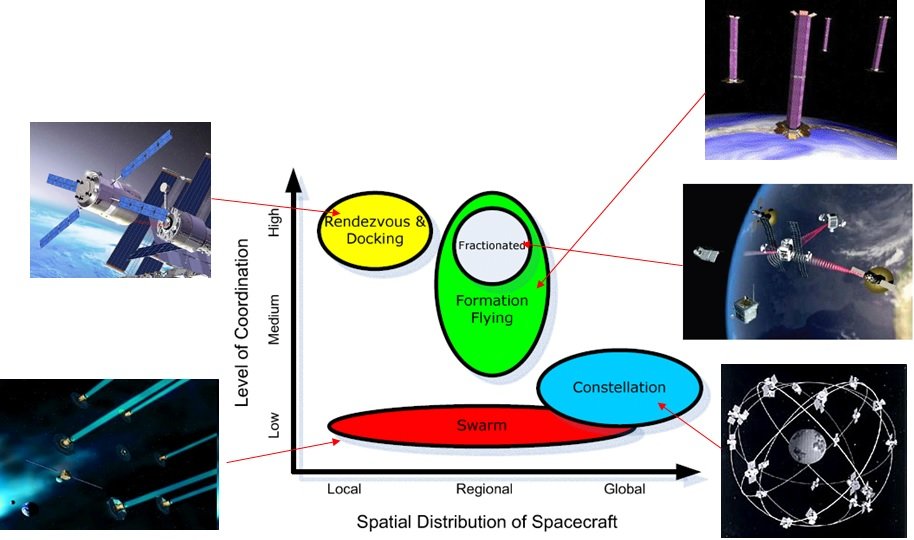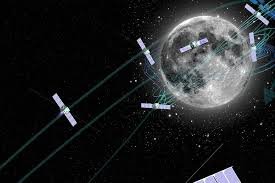Disruptive Concepts
What is a distributed space system? What does it look like? When we ask these questions, the first answer that comes to mind is the Global Positioning System, or in short, GPS. Today, GPS has a great effect on our daily life, although often we are not aware of its existence. In addition to GPS, many other disruptive concepts could benefit our society. According to the spatial distribution and the level of coordination of satellites, we can categorize these distributed space system concepts into several groups: rendezvous & docking, formation flying, constellation, and swarms.

At Space Systems Engineering, we are especially interested in two disruptive distributed systems. The first one is fractionated spacecraft, which distributes the functional capabilities of a conventional monolithic spacecraft over multiple heterogeneous modules that perform distinct functions and interact through wireless communication links. Our work on this concept focuses on its applications, system architecture, long-term formation maintenance, and onboard autonomy.
Another disruptive concept of distributed space systems, is satellite swarming, where many satellites work together to achieve the same objective with little to no knowledge about the other satellites. An example of such a concept is the OLFAR (Orbiting Low Frequency Antennas for Radio Astronomy) mission, where a cluster of satellites swarms in the vicinity of the moon to observe the universe at very low radio frequencies.

Contact

Dr. J. (Jian) Guo
Associate Professor
✉ J.Guo@tudelft.nl